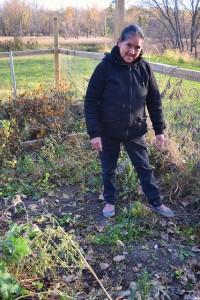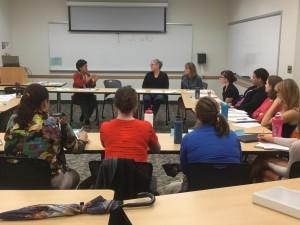By Bridget Roby
University of Minnesota students in the School of Public Health, the Humphrey School of Public Affairs, and the College of Liberal Arts have begun combining their efforts and expertise to help Carver County strengthen outreach and engagement with its growing Latino population. This mega-project is a confluence of interests and efforts, involving not just students from diverse disciplines but a range of community partners as well, including the Carver County Department of Public Health, Eastern Carver County School District, and the Carver County Parks and Recreation Department. “For Carver County, our goal is to be better equipped to engage with residents who aren’t always visible – yet who live, work, play and worship in this community every day,” said Jackie Johnston, Alternative and Community Education Director for the Eastern Carver County School District. “They are the members of this community suffering the greatest health disparities.” As the diverse list of county partners and academic disciplines suggests, students are approaching the issue of Latino engagement from three broad perspectives: public health, education, and parks and recreation.
Healthy families, healthy communities
From the public health perspective, the impetus for the project developed out of recent challenges Carver County Public Health faced in promoting healthy eating and active living among priority populations. “Public Health quickly realized there was a need to develop a deeper understanding of the Latino community and to find a way to build a bridge and a trusting relationship, eventually allowing for a community dialogue [about] barriers to health and long-term solutions,” said Public Health Program Specialist Jennifer Anderson, one of the project leads.
To start, graduate students in Professor Zobeida Bonilla’s Foundations of Maternal and Child Health Leadership course have begun delving into the literature to identify common barriers to participation in services and programs among the Latino community, as well as best practices for overcoming those barriers to increase participation and engagement. Students are focusing specifically on participation in early-childhood screenings and immunization—areas that both Public Health and the School District have identified as needs. “I really appreciate the opportunity to work on something that will be used to improve the health of a community,” said Sierra Beckman, a Master of Public Health candidate and student in Bonilla’s course. Beckman is part of a group of students that has begun researching best practices for increasing immunization rates among school-aged Latino children. While Bonilla’s students will focus primarily on background research, two undergraduate Spanish language students have embarked on a series of key-informant interviews with leaders in the local community to assess the potentially unique needs of Latinos in Carver County. As they gain a deeper understanding through their discussions and observations of community events, they will begin developing focus group questions that get to the core of the community’s needs and barriers to health. Students in a School of Public Health course on qualitative research methods will likely conduct the focus groups and analyze the data in the spring.
Engaging parents, preparing students
The Eastern Carver County School District (ISD 112) is also looking at ways to build and strengthen relationships with Latino parents to help their children succeed in school. “The district, and specifically community education, would like to see more Latino representation in our programs and services,” said Johnston. “We struggle to help families engage in the school process and for the children to come to school prepared to be successful.” The District currently offers family literacy programs for parents and preschool kids focused on English-language learning, early-childhood assistance, and parent orientation to the education system, but participation has remained low. The Community Education program wants to hear from the community about how to address the barriers to participation. As students examine barriers to participation and best practices for engaging Latino residents, they will also look at how best to build bridges between the school system and families. Johnston said the goals from the District’s perspective are increased involvement and input from Latino residents in both the schools and the community at large, and ensuring that the District has contact with each child at no later than three years of age to maximize the chances for school readiness and success.
Latino voices for recreation and play
At the same time, Carver County Parks and Recreation wants to explore ways to make sure the county’s parks, trails, and open spaces are meeting the needs of Latino residents. As the County embarks on the process of updating its comprehensive plan for the coming years, County planning staff want to make sure Latino voices are heard and help shape the community’s path ahead. “[The] Metropolitan Council has explained in their new 2040 Regional Framework that a further and better understanding of diverse—and oftentimes underserved—populations needs to be [included in future] park planning, but also considered [with respect to] existing park and trail areas,” said Sam Pertz, Parks and Trails Supervisor. “This covers everything from the public processes that park agencies utilize to the day-to-day services and opportunities [that are made] available.” Pertz has teamed up with graduate students in Professor Carissa Slotterback’s Designing Planning and Participation Processes course to develop a public engagement process for the County to use in generating public and stakeholder input from a range of participants and communities. The ultimate goal is to allow diverse voices to inform and shape the Parks and Recreation plans for the years ahead. Although the semester is young and the task is great, students and faculty alike are eager to combine their efforts to form the building blocks of a stronger, more reciprocal relationship between Carver County and Latino residents.
Bridget Roby is a Master of Public Health student at the University of Minnesota's School of Public Health focusing on maternal and child health.

